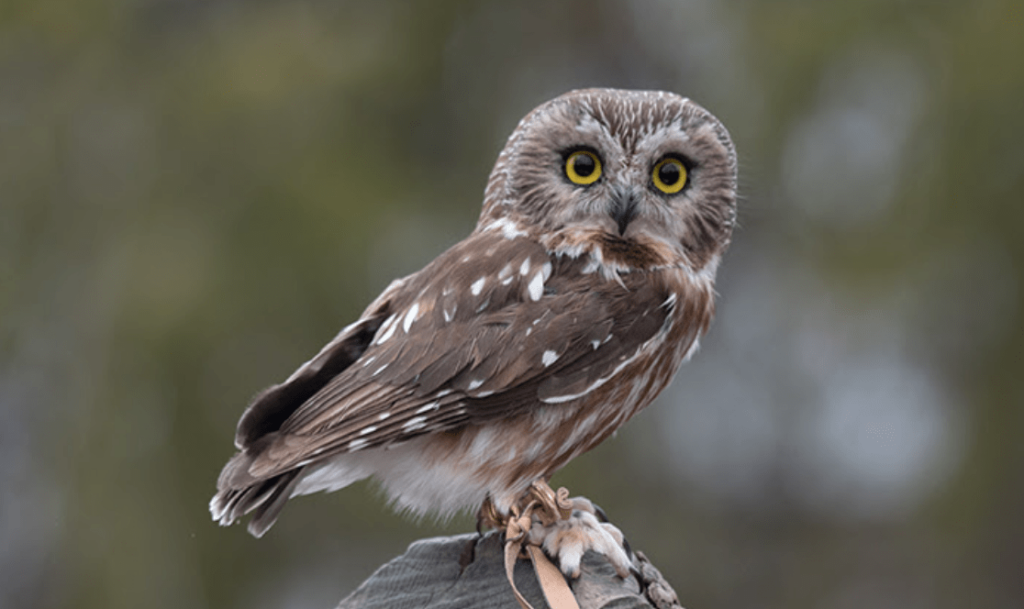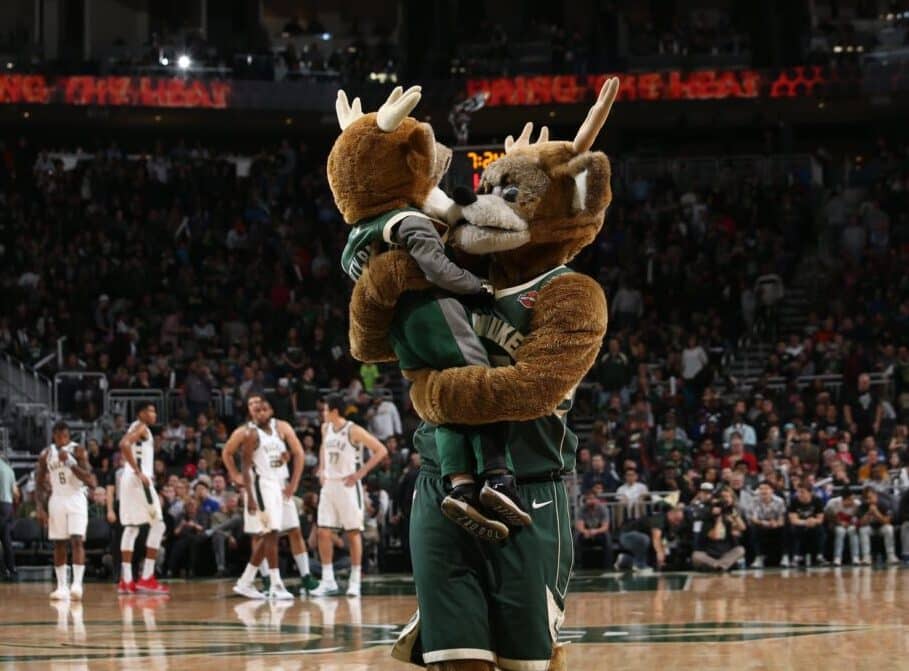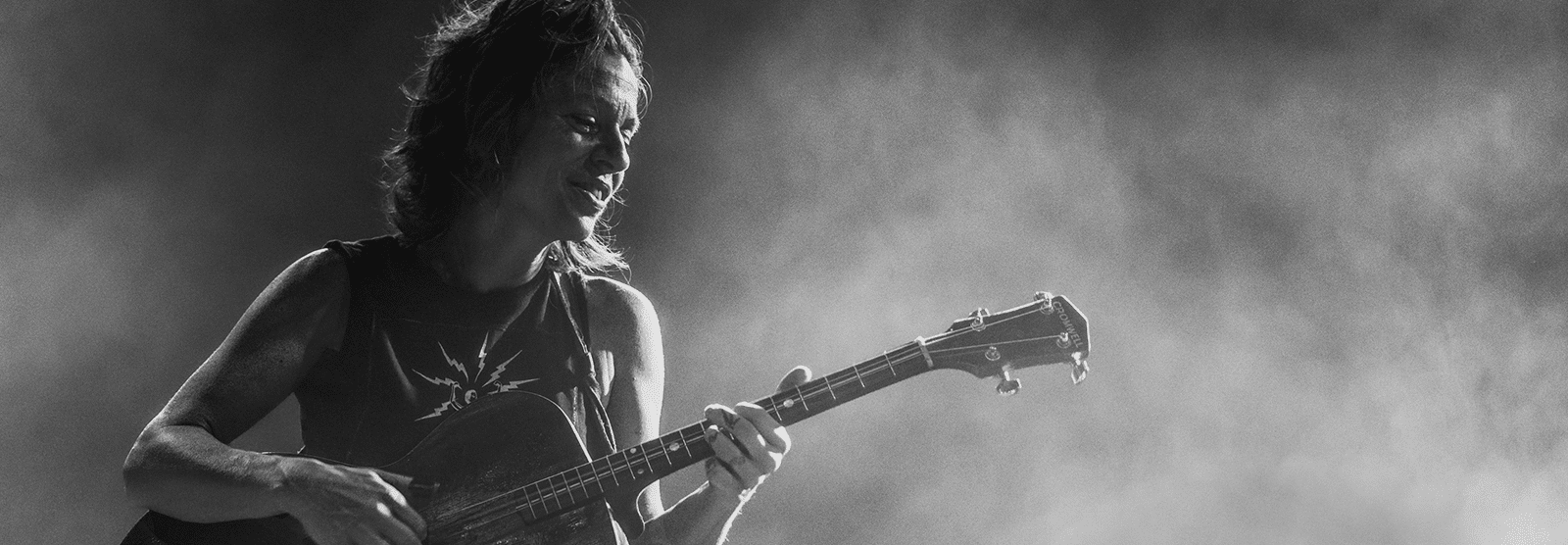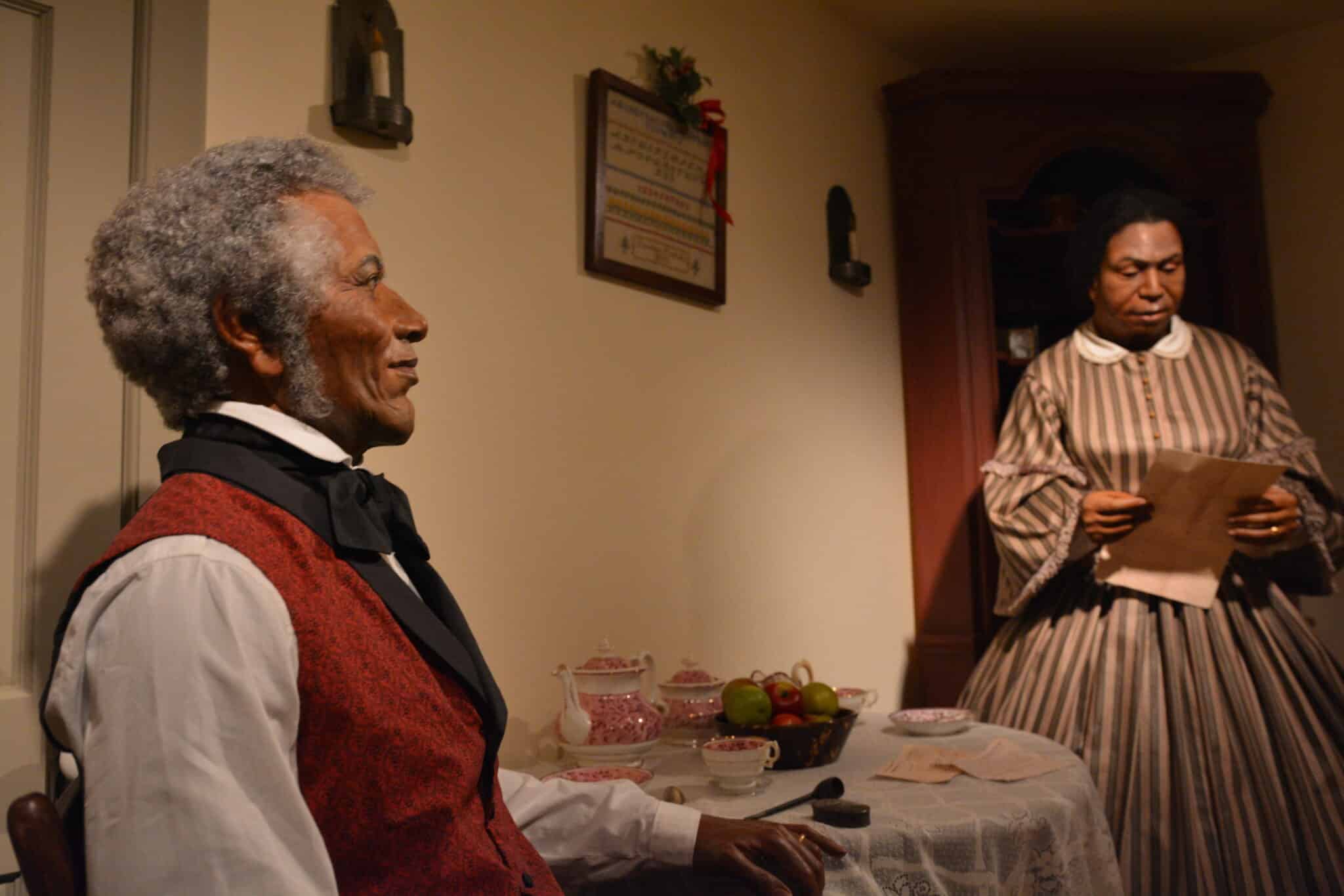
The Schlitz Audubon Nature Center has welcomed Willow, an adult female Northern Saw-whet Owl (Aegolius acadicus), into their educational Raptor Program.
Willow’s Story
Willow comes to Schlitz Audubon from the Wisconsin Humane Society Wildlife Rehabilitation Center.
She was found on a sidewalk in Shorewood, WI in October 2021 after experiencing a collision. Two residents, Genie and Tom, put the owl in a box and brought it to the WHS Wildlife Rehabilitation Center. The medical team discovered that she suffered a severe wing injury.
Although they tried to fix the wing, she lost the ability to fly due to the severity of her injury. She was deemed non-releasable, so they reached out to Schlitz Audubon to see if Willow could join their program as a raptor ambassador.
The staff at Shlitz Audubon was able to determine the Willow hatched in 2020. (In some owl species, newly molted feathers fluoresce bright pink under ultraviolet light, and this is the technique they used.)
About the Species
The Northern Saw-whet Owl is Wisconsin’s smallest owl species.
The average female Saw-whet weighs in at just 3.5 ounces and has a 16-19 inch wingspan, making it the larger of the two sexes.
Though it lives an incredibly secretive lifestyle, this tiny raptor is common and widespread across North America, preferring dense woodland such as conifer or mixed forest.
Like many small owls, the Northern Saw-whet Owl is a cavity nester and depends highly on dead trees for survival. It will also frequently use nest boxes.
This owl species hunts almost entirely at night, mostly by waiting on low perches and then swooping down on prey such as deer mice and other rodents, small birds, and insects.
Its prominent facial disc and unique asymmetrical ear structure allow it to locate prey with great accuracy. It is also a partial migrant and while some individuals stay in place year-round, many move to lower elevations for the winter. Southern Wisconsin is a popular overwintering region for many northern populations.
Migrating Northern Saw-whet Owls are even known to cross the Great Lakes and other large bodies of water.
These tiny raptors are one of the most charismatic species in wildlife conservation education.
For more information about the Raptor Program, head to https://www.schlitzaudubon.org/raptors/.
Calie Herbst, Editor-in-Chief of Milwaukee With Kids, has spent over a decade combining her experiences as a parent of three to create a hub for Milwaukee’s family adventures.
Her decade-long teaching career in Milwaukee Public Schools and academic background, including a Master’s in Teaching from Marquette University and dual B.A.s in Sociology and Spanish from the University of Wisconsin – Madison, fuel her passion for inclusive and engaging family content.
Calie is also a recognized voice in local media, contributing to WISN Channel 12 News, WTMJ Wisconsin Morning News, Fox 6’s Real Milwaukee, and B93.3.
Discover more about Calie’s journey and editorial approach on her About Page and Editorial Policy Page.









